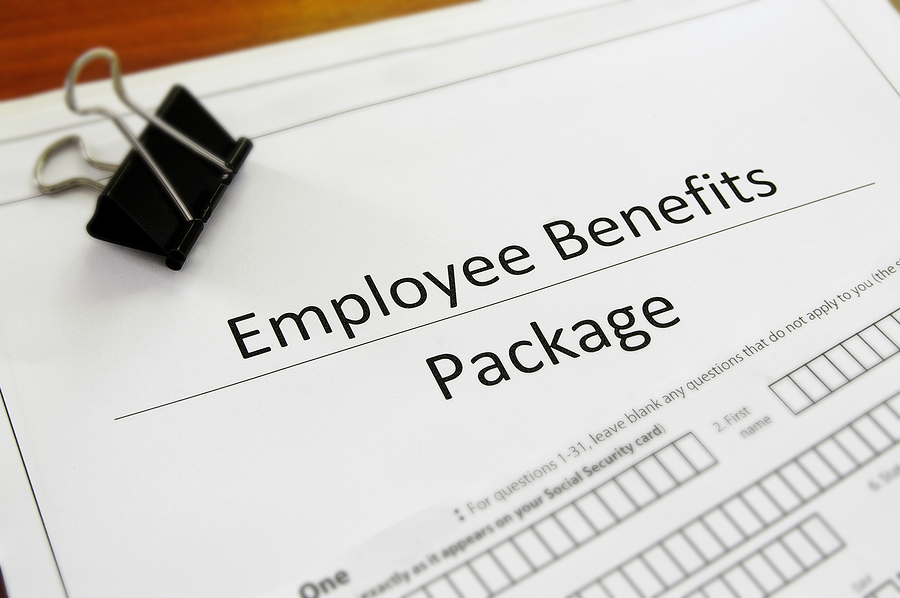A health savings account (HSA) or flexible spending account (FSA) can be an attractive addition to an employee benefits package. In fact, a Society for Human Resource Management survey found that 42 percent of large firms offer HSAs. But medical reimbursement accounts aren't just a good choice for larger firms; midmarket firms can benefit significantly, too. If you're not using HSAs or FSAs yet for your business, you might want to look into them.

Both HSAs and FSAs let employees put aside money to cover future health care costs qualified under the Affordable Care Act. These costs include copayments, coinsurance, deductibles and prescriptions. Employers often contribute to these accounts, and they come with tax benefits. But despite these similarities, there are several differences between the two.
What Is a Flexible Spending Account?
FSAs are more flexible than HSAs, hence their name. All employees are eligible for an FSA; there are no limiting requirements. Contributions made to FSAs are pretax, and distributions for health care expenses also aren't taxed. However, FSAs do have some disadvantages. Money in an FSA is typically "use it or lose it" and won't roll over to next year — although employers can opt to let $500 roll over, according to the Wall Street Journal. And unlike HSAs, an FSA typically won't travel with an employee if they change jobs, notes Forbes. FSA contributions also have a low cap of $2,550 per year. An Aon Hewitt study found that FSAs are actually diminishing in popularity because more employers are turning to HSAs, Business Insurance reports.
What Is a Health Savings Account?
Health savings accounts offer better deals than flexible spending accounts, but not everyone is eligible to use them. Like FSAs, HSAs don't tax contributions or distributions for health expenses. But unlike FSAs, the money in a health savings account can grow tax free, and the account follows employees if they change jobs. In addition, any money left unused at the end of the year will roll over. Another plus is that contributions to HSAs have higher caps than FSAs. For individuals, the cap is $3,350 in 2016; for families, the cap is $6,750.
The big downside to HSAs is that enrollment is limited. Only people with high-deductible health plans (HDHPs) can use HSAs. In 2016, an HDHP is defined as a plan with a deductible of $1,300 or more for individuals, or $2,600 or more for families, according to the IRS. Annual out-of-pocket maximums can't exceed $6,550 for individuals or $13,100 for families.
What Are the Advantages for Your Business?
- Attractive benefits packages. For midmarket firms, it's vital to compete successfully for top-level talent. Adding an HSA or FSA to your benefits package can be very attractive to potential hires.
- Covers the expenses of high-deductible plans. HSAs are often used in conjunction with HDHPs to help employees save on expenses. About 35 percent of middle market employers plan to shift to high-deductible health care plans to cut down on the rising costs of premiums. These employers often set up HSAs to help their employees cover the costs of meeting that deductible.
- Benefits for part-time employees. HSAs and FSAs can give midmarket employers a way to offer health care benefits to their part-time employees. For example, a Raising Cane's franchisee wanted to offer benefits to part-time employees but couldn't afford to give them a full health care package. To solve this, the franchisee extended the business's monthly debit card HSAs to part-time workers — a hugely popular decision.
- Encourages healthier living. You can promote healthier lifestyles by contributing extra money to an HSA if an employee reaches certain wellness goals, such as attending a lifestyle class or getting a biometric reading.
- Cadillac tax help. In 2018, a middle market firms could be affected by a 40 percent excise tax on overly generous health care plans. For this reason, some firms are shifting to higher-deductible plans, which are less likely to get hit by the tax, and combining them with HSAs. Only the employer's HSA contributions count toward determining if a plan will trigger the Cadillac tax. In contrast, both the employer's and the employee's contributions to an FSA count, according to the Kaiser Family Foundation. While some HSAs may help you avoid the Cadillac tax, no FSA will.
HSAs and FSAs can be beneficial additions to a middle market firm's portfolio. Remember, however, that an employee cannot have both a flexible spending account and a health savings account. The exception is a limited-purpose FSA that's used only for vision or dental expenses, according to Forbes. If you're ready to add FSAs or HSAs to your employees' health care choices, consult an expert to help you best incorporate them according to your firm's specific needs.
Does your firm offer HSAs or FSAs? If not, what concerns are stopping you? If you do offer an HSAs or FSA, how are you planning ahead for the Cadillac tax? Let us know in the comments below.
Stephanie Dube Dwilson is an NCMM contributor and publicist, journalist and attorney whose work has been featured by Businessweek, Newsmax and other national publications. She regularly reports on breaking news and business for Heavy, and she writes a monthly column for the American Bar Association. Stephanie is often sought by companies to consult on publicity, marketing and business development. You can follow her on Twitter or her blog.